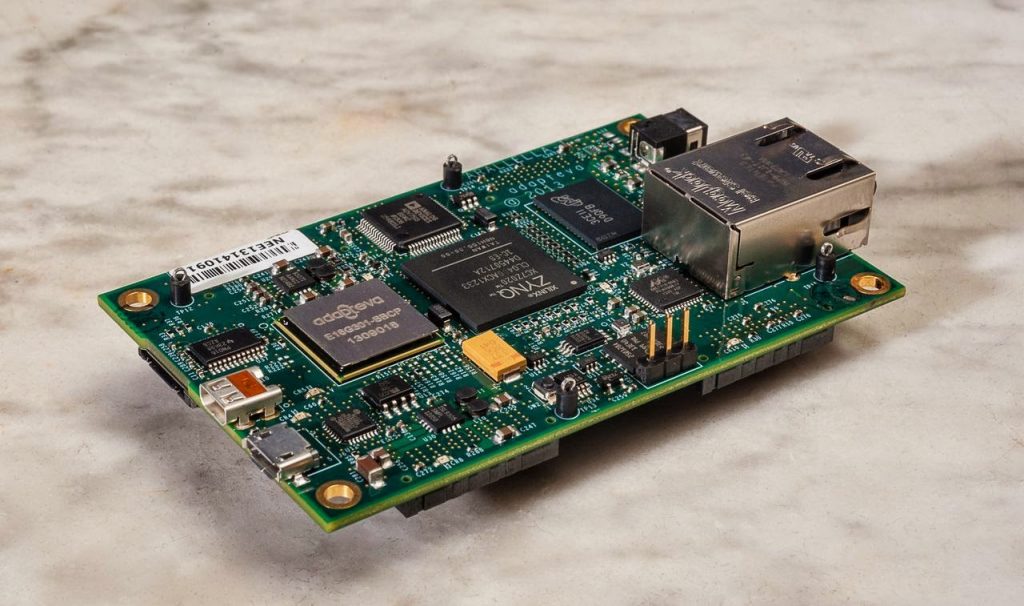A while back I ran a post examining the current trends in the hardware and software industries and expressed my concern at the direction they seem to be heading. In the last decade and the last few years in particular, technological advancement has slowed to a crawl despite companies finding ways to keep current tech interesting. But in that process, the same companies have in some ways also been slowly murdering their own industries and the personality types of people that could keep them going in the future. Technologically we’ve hit a wall, and the time is ripe for a major breakthrough to come in and change everything again.
That’s where Parallella comes in.
In the 90s we saw, among many other rapid advances, the genesis of the modern video card. Of course we already had 2D video cards, but then 3D Accelerators came along and supplemented the video cards in order to deliver unprecedented increases in performance and detail. Jump ahead a few years more, and you end up with a completely new kind of processing unit that truly revolutionized the tech industry.
Why do I tell that story? Simply put, because that’s exactly what’s going to happen again, this time with CPUs thanks to Parallella.
What’s Parallella?
As its name implies, Adapteva‘s Parallella ‘Epiphany’ chip is a new supplemental CPU with a focus on parallel processing. What this basically means is that a Parallella system has dozens of processors on a single unit, each currently capable of cranking out 1GHz a piece, collectively giving a total speed in excess of 45GHz.
Yes, you read that figure correctly. 45GHz!
Now, don’t make a mistake: Parallella does not operate at 45GHz, this is just the combined speed of all the little processors working together. (Read my post on multicore computing for more info on how that works, looking at Parallella as a multi-CPU situation).
What does it mean for the industry?
Considering Adapteva intends to make Parallella an open platform, it will mean a lot to the industry. Not only is the Epiphany chip the fastest coprocessing unit yet developed, which will make it appealing to many corporate and consumer groups, but it will also be accessible rather than locked down by one organization. Consider geekdom saved! But more than that, consider how big of a boost this development will give to the ARM CPU architecture on which Parallella is built. x86-64 has reigned supreme for decades now, and although it still gets the job done, ARM has picked up support with such speed in recent years (thanks to smartphones and tablets) that it may not be long before we see desktop PCs ditching the old standard in favor of parallel ARM central processors like the Epiphany coprocessor chip. This would also mean the ditching of a lot of software which requires the x86-64 architecture to run, although I’m certain emulation could take care of backwards compatibility what with all that speed available on Adapteva’s CoPU.
It would be a much-needed reboot of the tech industry as a whole (pun intended), providing an opportunity for new standards to arise and for legacy code that has somehow managed to linger in major OS’s for 20 years to finally be left behind completely. Not one area of computing would be left unaffected; in the grandest potential future, games would take a leap to startling realism, movies would become cheaper and easier to produce, and the common tasks we all do on computers would take on a new efficiency of function and attractiveness of form.
Sounds neat…so how many thousands will it cost?
Surprisingly, you shouldn’t expect pricing to be a barrier of entry! Right now Adapteva says they can produce a fully functional development kit computer running Parallella for just a couple hundred dollars. With help from funding by a Kickstarter campaign, they hope to further reduce that cost all the way to $99, which would simultaneously enable Parallella kits to be mass-produced and available for purchase by 2013, open-sourced documentation and SDK included for all who are interested. It will take a lot of financial backing for that dream to be realized, but high-profile Kickstarter campaigns like this have an uncannily high success rate.
Like the Raspberry Pi, Parallella’s low cost of entry is really for targeting an academic audience on a tight budget, but with all that horsepower for that price I have a hard time believing the tech will remain confined in universities for long. Once software gets developed for Parallella that fully takes advantage of it for practical means (i.e. not just for calculating Pi) I can only imagine how fast it will get incorporated into full-fledged computing products and shipped out to the masses. And remember, this is ARM we’re talking about here; who’d like to see their tablet running at 45GHz equivalent? Of course right now a Parallella system is too large for tablets, but the processor itself could certainly head there in no time.
It’s a very exciting prospect, and a sudden boost in technology that I was not expecting to see so soon. Right now it all rides on the Kickstarter campaign, but it sounds like the next few years just got a lot more interesting as we watch this develop!








